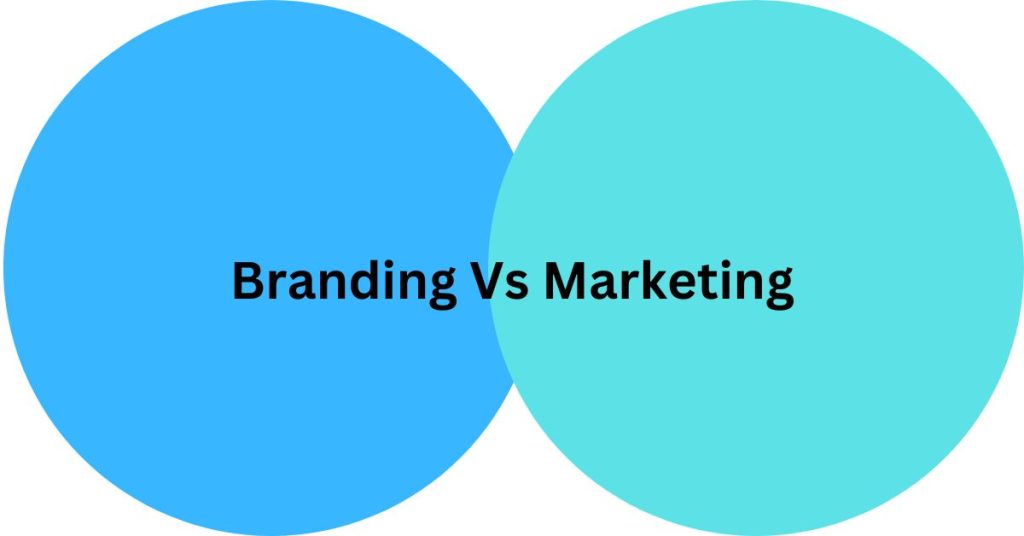
Branding and direct marketing are 2 different branches of marketing. Both play a vital role in marketing. In this context, we will share the difference between branding and direct marketing.
Let’s jump:
What is Branding
Branding is the process of creating a distinctive and memorable identity for a product, service, company, or individual. It encompasses various elements that work together to shape how a brand is perceived by its target audience.
Effective branding is essential for businesses and individuals alike because it helps establish a unique identity, build trust, and create a solid emotional connection with the target audience. A well-executed brand strategy can lead to increased customer loyalty, competitive advantage, and long-term success.
What is Direct Marketing
Direct marketing is a promotional strategy in which businesses or organizations communicate directly with a target audience to promote their products, services, or messages. The key feature of direct marketing is that it establishes a one-to-one relationship between the marketer and the recipient of the marketing message. This type of marketing aims to elicit a specific, measurable response from the recipient.
Direct marketing can be an effective way to reach a specific target audience, generate leads, and drive immediate sales. However, it’s essential for businesses to comply with relevant laws and regulations, such as the CAN-SPAM Act for email marketing and telemarketing rules, to ensure ethical and legal practices in their direct marketing efforts.
What is the Difference Between Branding and Direct Marketing
Branding and direct marketing are two distinct but interconnected aspects of marketing that serve different purposes and employ different strategies. Here’s a breakdown of the key differences between branding and direct marketing:
Purpose:
Branding: The primary purpose of branding is to establish and maintain a robust and recognizable identity for a product, service, company, or individual. It focuses on creating a positive perception, building trust, and forming an emotional connection with the target audience. Branding is more about long-term brand equity and loyalty.
Direct Marketing: The primary purpose of direct marketing is to prompt an immediate and measurable response from the audience, such as making a purchase, filling out a form, or taking a specific action. Direct marketing is more about short-term results and driving immediate customer actions.
Approach:
Branding: Branding is often a broader and more holistic approach. It involves defining a brand’s identity, values, personality, and positioning in the market. Branding strategies include creating a consistent visual identity, crafting brand messaging, and shaping the overall brand experience.
Direct Marketing: Direct marketing is a more targeted and tactical approach. It focuses on specific marketing tactics and channels designed to reach a narrowly defined audience. Direct marketing strategies include methods like email marketing, direct mail, telemarketing, and online advertising.
Time Horizon:
Branding: Branding is a long-term investment. It aims to build enduring brand equity and a lasting relationship with customers. Successful branding efforts may take time to yield substantial results.
Direct Marketing: Direct marketing is often associated with short-term or immediate results. It’s about generating quick responses and measuring the effectiveness of campaigns in terms of conversions and ROI.
Also Read: Mastering Bulk Email Marketing Strategies
Measurement:
Branding: The success of branding efforts is typically measured through brand awareness, brand perception, customer loyalty, and market share. Metrics like brand recall and customer sentiment are used to assess branding success.
Direct Marketing: Direct marketing success is measured by specific, quantifiable metrics such as response rates, conversion rates, click-through rates, and sales attributed directly to a marketing campaign.
Customer Engagement:
Branding: Branding seeks to engage customers on an emotional level, creating loyalty and trust over time. It’s about building a lasting relationship and fostering brand advocacy.
Direct Marketing: Direct marketing aims to engage customers on a transactional level, prompting them to take immediate actions, such as making a purchase or requesting more information.
Examples:
Branding: Coca-Cola’s iconic red logo, Apple’s sleek and minimalist product design, and Nike’s “Just Do It” slogan are all examples of branding elements that have become synonymous with these companies.
Direct Marketing: Sending an email with a limited-time discount offer, mailing a catalog with a call-to-action coupon, or running a targeted Facebook ad with a “Shop Now” button are examples of direct marketing tactics.
End Words
In practice, successful marketing often involves a combination of both branding and direct marketing strategies. Establishing a strong brand presence can make direct marketing efforts more effective because consumers are more likely to engage with and trust a recognized and reputable brand.